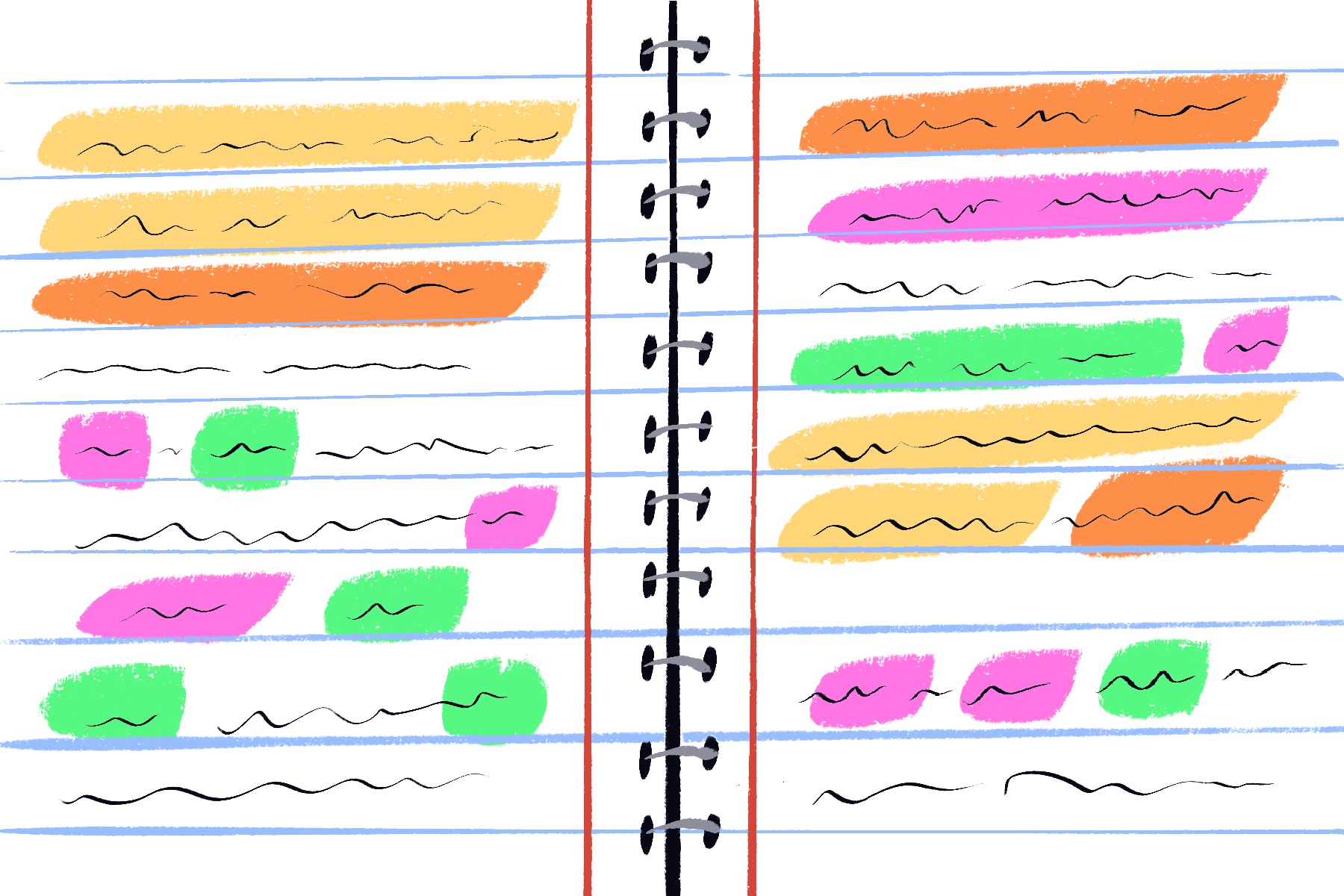We all know that one person in class who pulls out 20 pens just to take notes during lectures. Then there’s those who take notes in only three to five different colors and some who only write their notes in one color. These stark differences in note taking systems beg the question: How effective is color coding your notes?
Does color coding actually aid in memory retention or does it just make your notes aesthetically pleasing? According to NCBI, color plays an integral role in our visual experiences. It’s able to relay information and can be very effective in learning and memory performance.
Several studies have been done to see just how much color can affect people’s attention and memory. Certain colors have been linked to certain functions in the brain. For example, the color green might allow for long-term concentration and clarity of certain concepts. Blue is linked to increased productivity. Research has been found to support that both these colors aid in retention of information.
Back to the question at hand: How effective is color coding your notes?
Personally, I do use a color-coding system to organize information in my notes and to highlight important concepts I need to spend more time studying. In my system, I use five colors. Each color has a specific function and role in my overall note taking system and allows me to easily pull the information I need.
In my designated color-coding system, I use five colors — each with a specific purpose. Black is used for section headers. Then I use pink to further break down information by subheadings. Gray is used to write out any notes for specific subsections. Lastly, I write definitions in orange and any concepts that will appear on the test in purple.
Digital note taking allows for endless customization and reorganization of notes, so I’m easily able to switch the colors of certain texts. Even before I went paperless, my organization system for my notes has always involved five colors and has been easy to keep up with during lectures.
Color coding has certainly helped me improve as a student, but I try to limit the amount of colors I use to about five. I decided to interview three close friends of mine about their personal taking systems, to see how they differed from my own. I also wanted to see if color coding helped them remember.
Do you color code your notes? If not, what is your current note taking system?
Julie: “I tend to color code my personal notes done outside of lecture. In my notes I typically use about five to six different colors.”
Tyler: “No, I prefer not to color code because it doesn’t help me remember information. I like for my note taking system to remain simplistic. Also, it is easier to remember a pencil instead bringing a multitude of pens to class every day.”
Jala: “I personally don’t color code. I like to keep my note taking system simplistic.”
Does it help with the overall organization of your notes?
Julie: “I use a different color for each subtitle of a chapter. I also highlight any definitions and make use of shapes to note important information mentioned in class.”
Tyler: “Within my notes, I don’t use a color-coding system, but I make use of shapes. I use bullet points to jot down extra tidbits of information within an overall topic. I also underline or box important information that might appear on a test or that is the most important.”
Jala: “I tend to use bullet points, dashes and indents for organization. So, color coding has little to no effect on my overall system of note taking.”
Would you say your organization system is easy to keep up with during class?
Julie: “Typically, during lectures I try to get as much information down as possible. After class, I’ll go back and organize and color code my notes. My color-coding system isn’t intricate but, I find that if I focus on color coding, I miss key information.”
Tyler: “Yeah. For me it’s easier to write everything in pencil first. That way I can get as much information down and then later on I go back and highlight important information.”
Jala: “I feel like if I started color coding in class, I would want it to be perfect. So, it’s much easier to write in a single color or only worry about bringing a single writing utensil to class. Also, the use of dashes, bullet points, and indentations help me differentiate certain topics.”
In your college experience, do you think has color coding your notes helped you perform better in class? Why or Why not?
Julie: “Yeah, I think generally color coding my notes has helped me perform better than my peers. It has allowed me to easily pinpoint information needed for a test and has overall aided in my overall memory of certain topics.”
Tyler: “Overall, I found my note taking method to be the most efficient for me. My lack of color coding has allowed me to efficiently get down information during lectures. Instead of color coding, I use shapes and strategic highlighting to my favor.”
Jala: “I’m not quite sure if my note taking system has aided in my success or not. But I’m not a 4.0 student, so I guess that speaks for itself.”
Although there is plenty of literature supporting the fact that color coding aids in memory retention, I think it depends on the person. Color coding works if you have a designated system in place, but it can also be detrimental.
From the friends I interviewed and the friends I know that utilize a color-coding system, most of them do not bother with color coding during class. Typically, they will rewrite the notes after class — that way they don’t miss any important information.
So, would I say color coding works? I think it helps me to remember important information and helps me to easily pinpoint certain information in my notes. Where I think color coding goes too far, is when you’re using 20 different colors versus five colors. Using four to five color allows for each color to serve a specific function. If you’re using 20 colors, it’s difficult to remember what color is assigned what task.
















